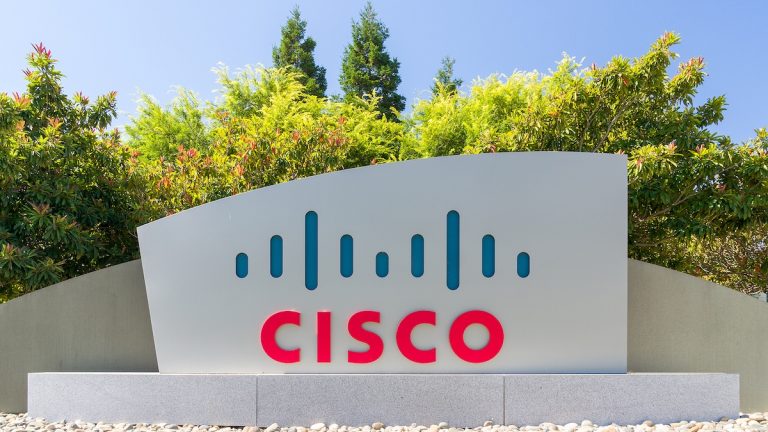Cisco will use quantum entanglement to harness the combined power of multiple small, distributed quantum computers to operate as a single massive quantum computer.
Einstein called it ‘spooky action at a distance’: the property of a pair of entangled particles, such as photons, to correlate across time and distance. Einstein worried that it defied classical laws of physics and questioned his theory of relativity. However, contemporary physicists are harnessing this property to advance telecommunication (itself literally, even if coincidentally, meaning ‘communication at a distance’).
The most common use of entanglement today is within quantum key distribution (QKD), where security based on entanglement is considered the ‘best’ method of securely distributing encryption keys. The principle behind QKD is simple (ultimately relying on the Heisenberg Uncertainty Principle): any attempt to intercept the transmission will disturb the quantum state and be instantly recognized.
Cisco has a loftier intent, beyond but including QKD – to use entanglement to forge a new quantum internet; one in which separate quantum computers in multiple physically distributed data centers can be linked and combined into a single more powerful quantum computer. It has announced its Quantum Network Entanglement Chip, the building block, and the opening of Cisco Quantum Labs in Santa Monica.
The chip can create 1m high-fidelity entanglement pairs per output channel at a rate of up to 200m pairs per second. Quantum Labs is Cisco’s new dedicated research hub for the scientists and software engineers to advance quantum networking. The dual announcement is a demonstration of Cisco’s confidence in its plans for a quantum internet.
The Entanglement Chip has two primary functions. Firstly (in the shorter term), it will help build a quantum internet based on QKD, allowing the quantum secure distribution of encryption keys. Secondly (in the longer term), that same QKD will securely distribute the entangled photons that will allow distributed quantum computers to operate in unison as a single large general purpose quantum computer.
The common belief is that usable quantum computers will be available by around 2030. These computers will harness the power of a few thousand qubits – but the true potential of quantum computing to solve many of today’s problems (new drug discovery, materials science, climate modeling, super-charged AI algorithms and more) will require quantum computers with millions of qubits.
Cisco’s plan is to collapse the development timescale between a few thousand and millions of qubits by providing a quantum internet. Just as interconnecting smaller classical data centers via the current Internet phased out the requirement for large scale centralized monolithic mainframe computers, so the existence of a quantum network of interconnected quantum data centers will reduce if not eliminate the need for single mammoth monolithic quantum computers.
“In our quantum data center architecture, this property enables provably secure communications between quantum processors. The Cisco network entanglement chip generates high-fidelity entangled photon pairs at telecom wavelengths, serving as the foundation for quantum-secure networking. These distributed photons maintain quantum coherence with 99% fidelity, ensuring reliable security guarantees across the network,” explained Vijoy Pandey, Senior VP at Outshift by Cisco.
“Scaled-out quantum data centers, where processors work together through specialized networking, will be the practical and achievable path forward,” he wrote in an accompanying blog report. “By building this infrastructure now, Cisco is helping to accelerate the entire quantum ecosystem.”
The basic building block of distributed quantum computing will be the entanglement chip, creating entangled photons enabling instantaneous connection through their ‘spooky action at a distance’ (otherwise known as quantum teleportation; that is, the immediate correlation of the quantum state of the first particle to the second particle, regardless of distance). The entangled photons have been dubbed ‘ebits’ to differentiate them from qubits.
The ebits will enable the execution of remote quantum gates allowing distributed quantum computing by facilitating communication and computation across multiple quantum processing units (QPUs). The QPU is that part of the quantum computer that executes the quantum gates and algorithms, enabling the quantum operations. The use of entangled photons between them allows the operation of multiple QPUs in tandem, scaling performance beyond the limitations of individual QPUs even in different physical locations.
Much of Cisco’s current work is still in the theoretical and prototype phase, but by making a public announcement now, the firm is providing a statement of confidence that it will succeed in its plans. If a timescale is to be implied, it has at least until 2030 (and possibly a few more years) to succeed before the arrival of small but usable quantum computers in distributed data centers. These could be multiple incidences within industry sectors (such as healthcare or higher education where collaboration would be mutually beneficial), or within public clouds (such as Google Cloud, AWS or Azure) where access to powerful quantum computing could be leased out to individual customers on a per use basis.
Related: Quantum Wars: Google, Microsoft, and Amazon’s Competing Paths to Fault-Tolerant Qubits
Related: What Microsoft’s Majorana 1 Chip Means for Quantum Decryption
Related: Google’s Willow Chip Signals the Urgency of Post-Quantum Cryptography Migration
Related: Cyber Insights 2025: Quantum and the Threat to Encryption


